- Editorial Offices
- 325 Brantly Hall
- Missoula, MT 59812
- (406) 243-2488
- themontanan@umontana.edu
- Icons By Maria Maldonado
UM graduates are unlocking the mysteries of space—what other planets look like, how astronauts can visit them, and whether there is, or ever was, life beyond Earth

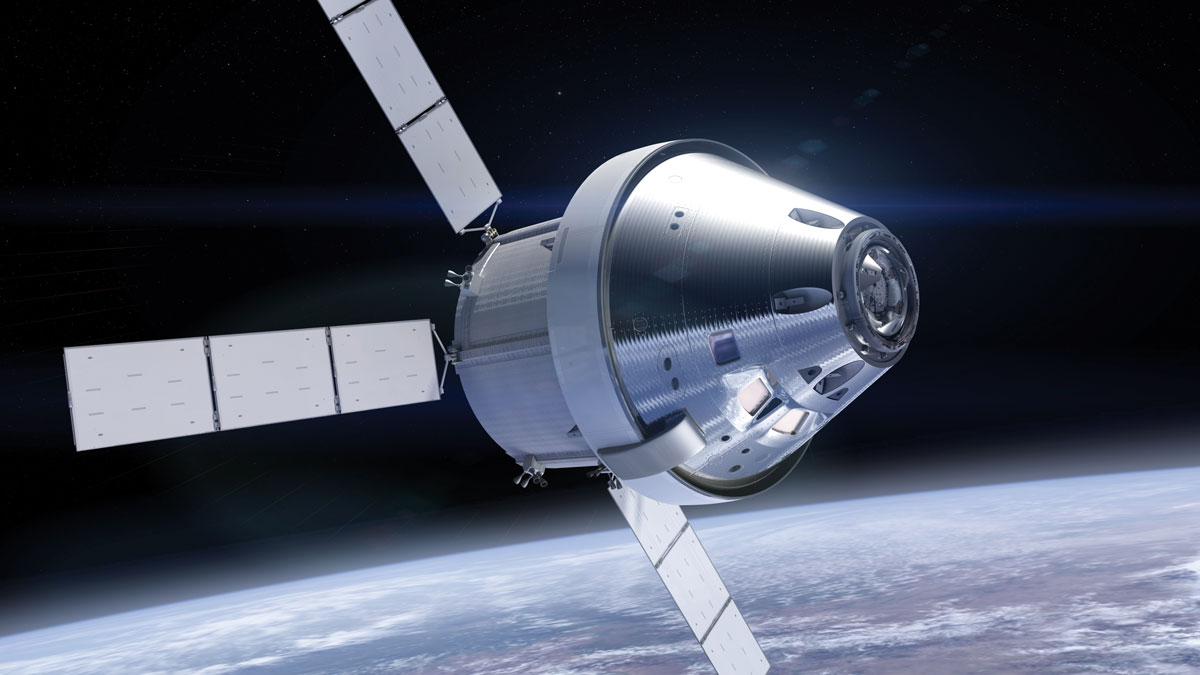
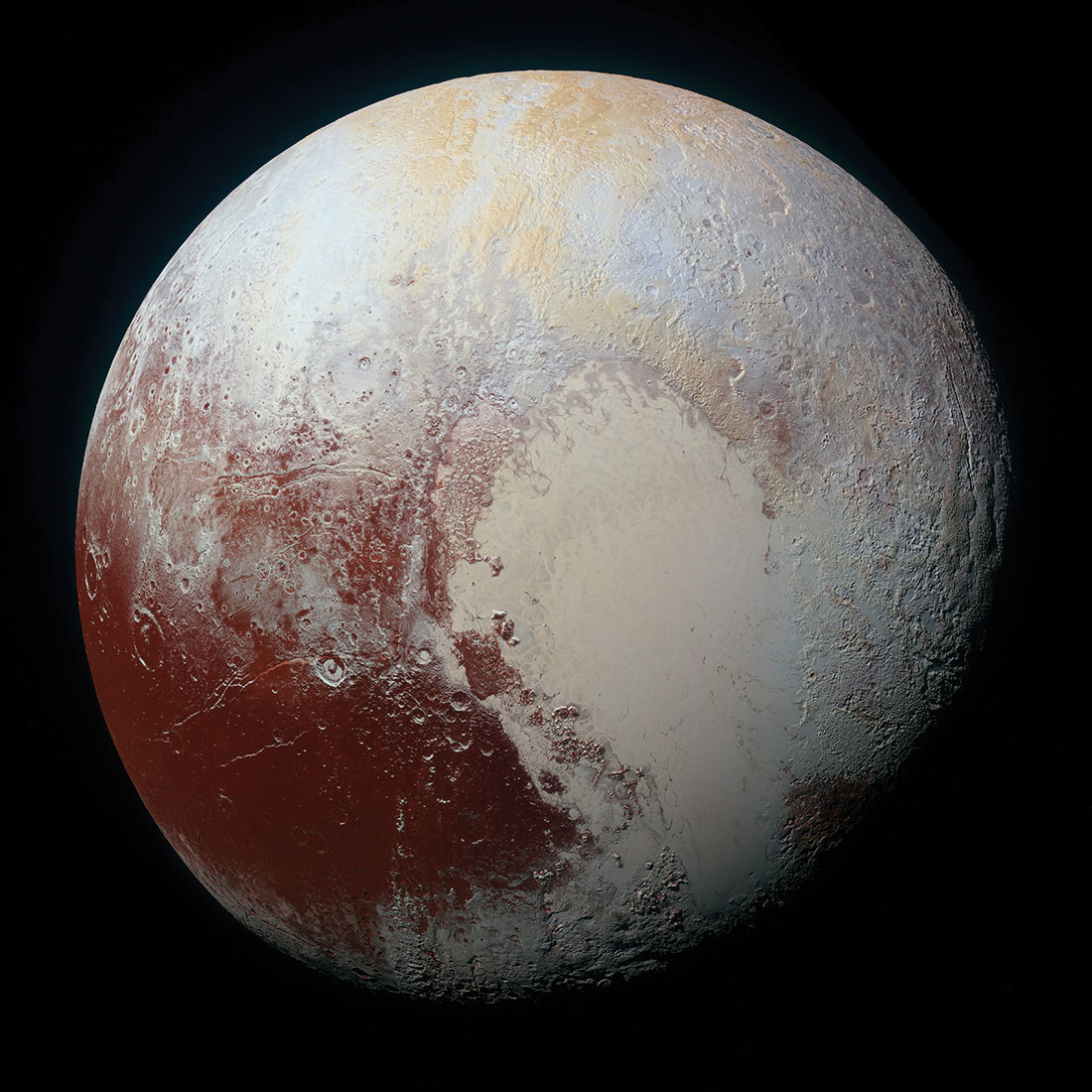

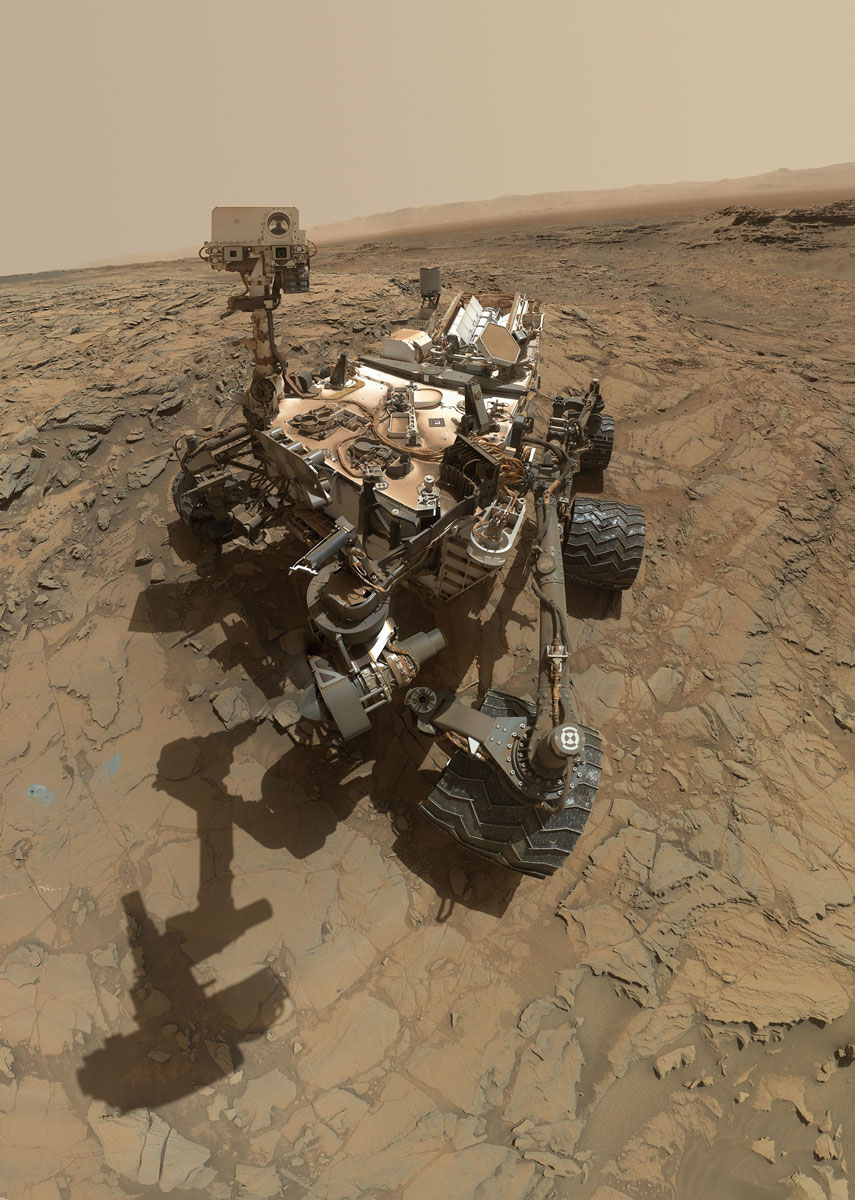
Montana isn’t exactly the epicenter of the space industry.
It’s 2,700 miles from Cape Canaveral, where NASA launches rockets. It’s 2,000 miles from Houston, NASA’s center for manned space travel. And it’s half a world away from Kazakhstan, where U.S. astronauts hitch rides on Russian rockets to visit the International Space Station.
But even if Montana is far from the space industry, it has plenty of space. At night, the Big Sky offers some of the best views of our galaxy. All that light, and all that distance, can set the mind a-wandering. What would it be like to walk on Mars? What lies beyond the range of our most powerful telescopes? And has there ever been life on other planets?
For most of us, the questions are too overwhelming. We shake our heads and walk inside. But these four University of Montana alumni have made careers of answering the seemingly unanswerable. In doing so, they’re shedding more light on the vast darkness of space and discovering where we fit in the grand mystery of the universe.
In the search for life beyond Earth, John Grotzinger says, planetary scientists come in two types: “There’s the Star Trek crowd and the Sherlock Holmes crowd.” One favors bold exploration and risk-taking to push science forward in leaps and bounds. The other takes a deductive, systematic approach that peels away the mysteries layer by layer.
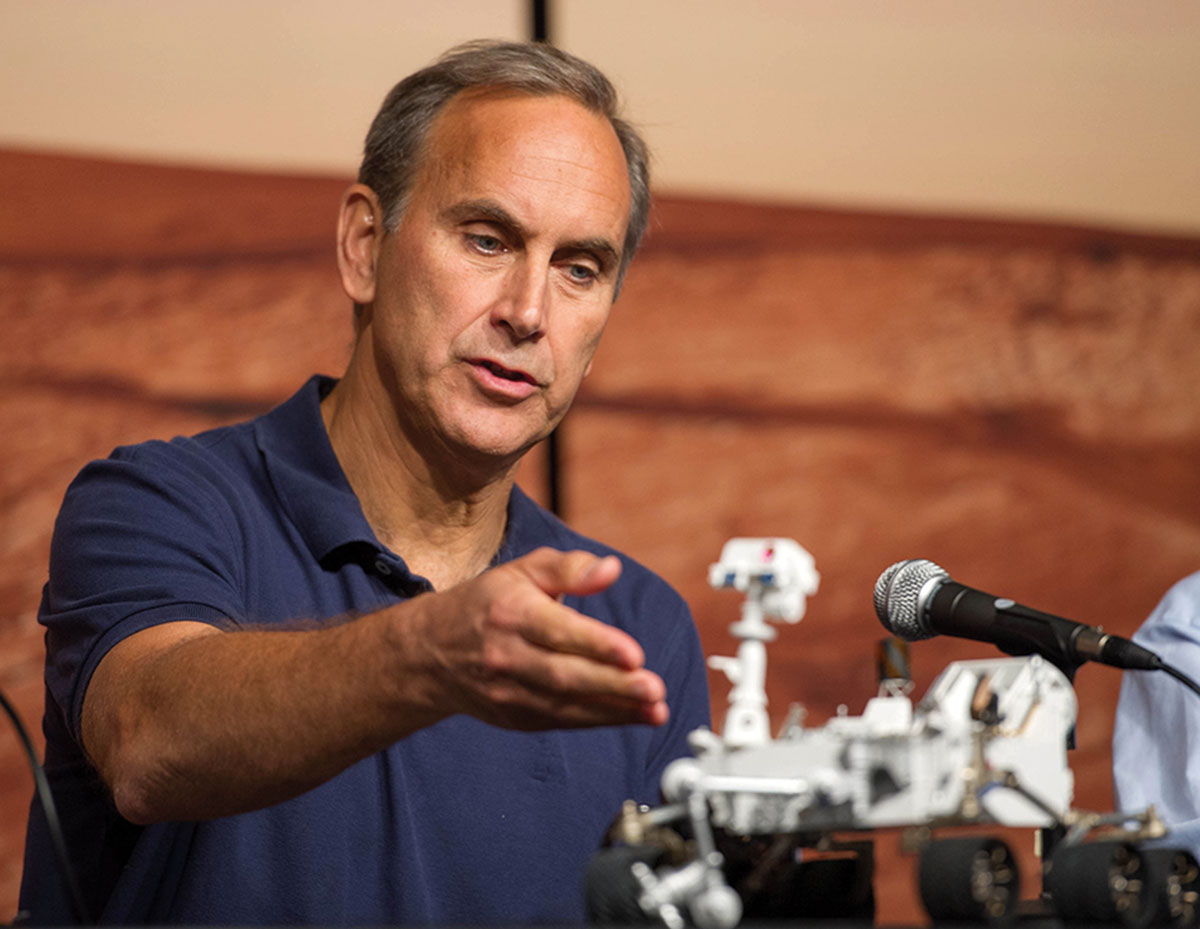
“I’m definitely among the latter,” says Grotzinger, who spent eight years as chief scientist for Curiosity, the NASA rover currently exploring Mars. But sleuthing out life on Mars is anything but elementary. So NASA charged Curiosity with a conservative mission: not to find life on Mars, but to find evidence of an environment that could have supported life. This would be an important clue in solving the mystery of whether life ever evolved on the Red Planet.
For Grotzinger and his team of 472 scientists from thirteen countries, the Sherlock Holmes approach paid off. Curiosity landed on Mars on August 5, 2012, and days later, it found what it was looking for.
“We predicted we’d land on a streambed, and we found it,” Grotzinger says. “We predicted that water flows downhill like on Earth. We followed it, and we found the lake. If life had evolved on Mars, this would’ve been a place that could’ve supported it.”
Just like that, the primary objective was in the bag. The science team deduced that the streambed once contained clear, ankle- to waist-deep water, flowing at about three feet per second. Not dissimilar, in other words, from the Montana trout streams Grotzinger visited while doing fieldwork for his master’s in geology at UM in the early 1980s.
After more than three years on Mars, Curiosity’s detective work is far from over. The six-wheeled, plutonium-powered, SUV-sized rover is creeping across the planet at about a hundred yards a day. “We drive in a stutter step, about half a meter at a time,” Grotzinger says. “It’s not like we go blazing across in our rental car.”
Still, Curiosity has traveled more than eleven kilometers on the Red Planet. It’s now ascending the foothills of Mount Sharp, photographing the landscape, drilling into rocks, and analyzing soil samples in its onboard laboratory. With the primary objective accomplished, Grotzinger says Curiosity is looking for other types of habitable environments and a clearer understanding of Martian geology. There’s a lot the rover could learn before it runs out of power in five or six years.
Last year, Grotzinger stepped down from his position as Curiosity’s chief scientist. Now he’s head of strategic planning and the chair of geologic and planetary sciences at Caltech. From what Curiosity has found on Mars already, Grotzinger is encouraged that one day scientists will uncover proof of life beyond Earth.
“At some level it becomes a bit philosophical,” he says. “But I’m excited that the more we look in detail, the brighter the prospects become.”
In the meantime, Grotzinger still finds Earth plenty interesting. Soon he’ll lead a group of students to Africa to study the sudden emergence of animals 500 million years ago. Picture him with a magnifying glass and a deerstalker hat, following the clues wherever they may lead him.
Unfortunately for Brian Nixon, there are no one-hour photo labs on Mars. That makes his job of operating the color cameras on NASA’s Curiosity rover a little more complicated. Nixon’s typical morning is spent conferring with international scientists to decide on landscapes and specific rock formations to photograph. Then he writes the commands that tell the rover when and where to take the picture. The commands are reviewed, and then, at the end of the day, they’re sent to Curiosity.
“We really try to do everything perfectly,” Nixon says. “On Earth, you can take a picture, look at it, and adjust the settings. On Mars, you’ve got to get it right the first time.”
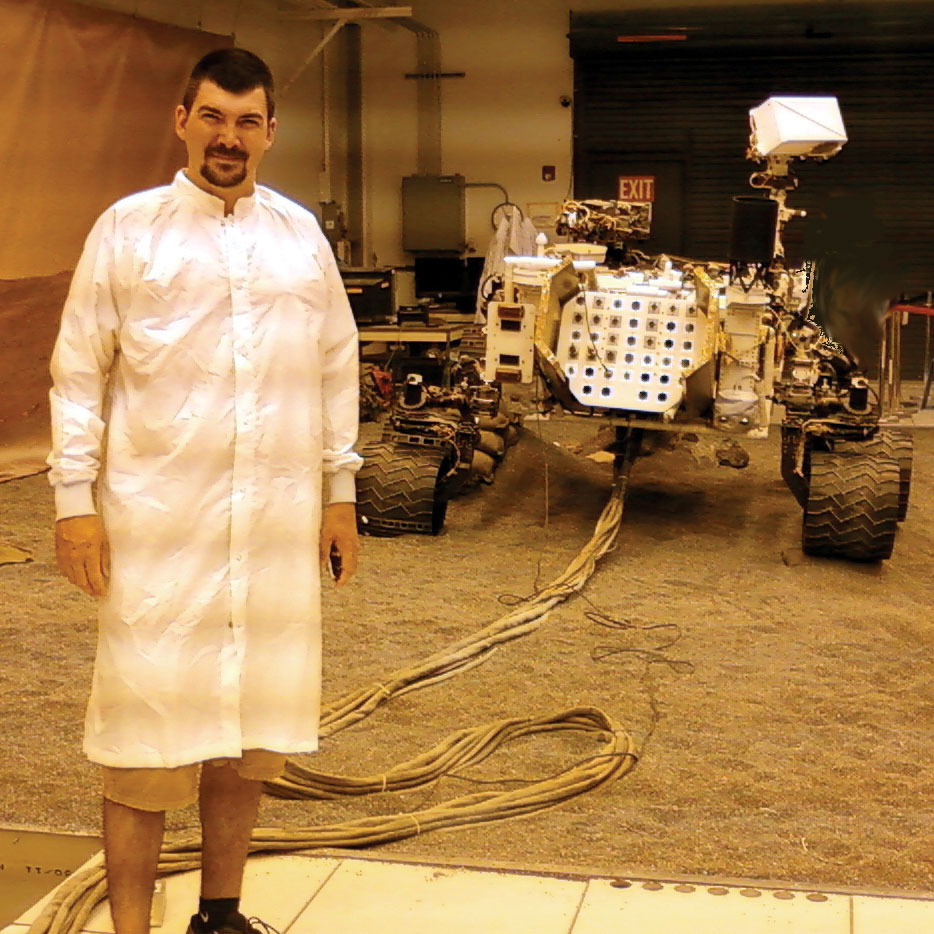
Even traveling at the speed of light, the commands take about fifteen minutes to reach Mars. Curiosity receives the signal, takes the pictures, and waits for a NASA orbiter to pass overhead. The rover beams up the photographs, and the orbiter transmits them back to Earth. If all goes well, they’re on Nixon’s computer by the time he gets to work the next morning at Malin Space Science Systems in San Diego.
An overnight turnaround isn’t bad, considering Nixon’s cameras are roughly 140 million miles away. And the photographs Nixon takes are critical to Curiosity’s mission. The rover’s drivers need the images to navigate around obstacles and choose the best routes for Curiosity’s fragile tires. The pictures also are the “eyes” for scientists back on Earth. Observation is the first step of the scientific method, and these pictures give scientists the empirical evidence to learn about the geology of Mars.
Nixon often is the first to see Curiosity’s photographs, which puts him on the frontlines of the exploration of the Red Planet.
“It’s just like science fiction or Lewis and Clark,” he says. “To be involved in exploring another planet is very fulfilling.”
If Curiosity’s cameras capture proof of life on Mars, Nixon could see it first.
“I wouldn’t expect to find a dinosaur skeleton,” he says, “but I could see us finding some very simple fossils of algae or simple organisms, kind of like what you’d see in the Belt Rocks around Western Montana.”
“Most of Western Montana is now represented on Mars.”
-Brian Nixon
Nixon’s position also gives him the chance to name some of the topographical features that Curiosity encounters on Mars. A Missoula native who earned his bachelor’s in geology at UM in 2000, Nixon has drawn on Montana’s geography for Martian place names. Until recently, Curiosity was exploring a quadrant called Arlee. It drilled into a rock at a place Nixon dubbed Big Sky. A rock outcrop is named Missoula. When Curiosity couldn’t drive over Logan Pass, Nixon suggested the name Marias Pass for the alternate route.
“Most of Western Montana is now represented on Mars,” Nixon says.
Curiosity now is in the Namibia quadrant, winding through dark sand dunes that appear to shift in the Martian wind. Nixon is excited to see what Curiosity photographs in the months and years ahead.
“I’ve always been into space and NASA,” he says. “As a kid, before the Internet, I sent away for all the pamphlets on the space shuttle and different science missions.”
Now a NASA rover sends raw footage of another planet directly to his computer. Nixon’s boyhood self would hardly believe it.
When Daniel Baca was a kid, he had a poster on his bedroom wall of astronaut Bruce McCandless floating untethered in space, hovering between the blue glow of Earth and the great black beyond.
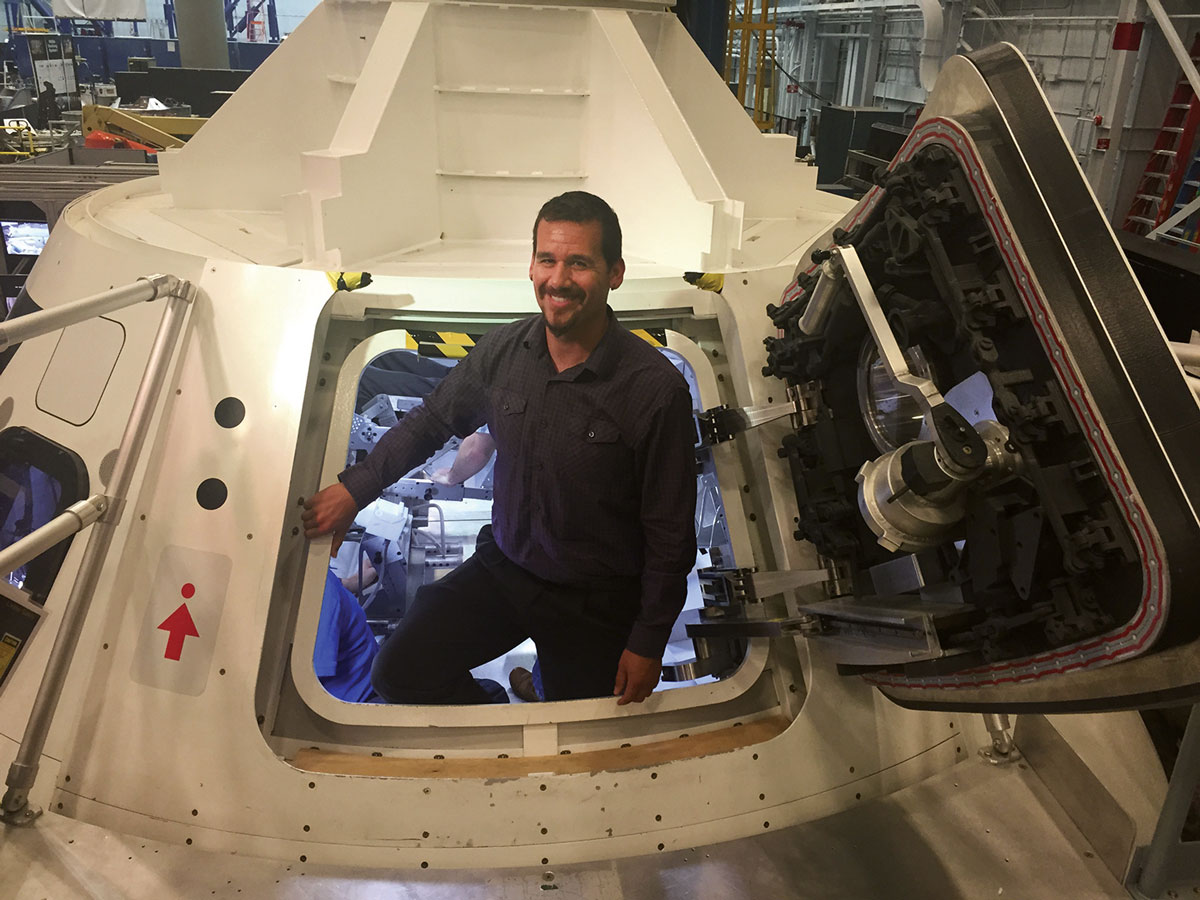
“I wanted to be that astronaut when I grew up,” Baca says.
It was a big dream for a poor kid living on ramen and government cheese in Livingston. Baca’s family moved to Kalispell when he started grade school. Math and science came easily to him, but Baca didn’t excel academically.
“I was a crummy student,” he admits.
It may have stayed that way, if Baca hadn’t taken up jujitsu in high school. Baca’s instructor required that he take an anatomy and physiology course at the community college.
“I had no intention of going to college,” Baca says. “But I took that course, and some others, too. Once I got in that learning environment again, I found that I really missed it.”
Baca’s grades earned him a Board of Regents scholarship at UM, where he studied astrophysics and earned a degree in 2003. A career in space looked promising until his final semester.
“Three months before I graduated, the space shuttle Columbia broke up on re-entry,” he says. “The space program was effectively canceled while the accident was investigated.”
“The first person to set footprints on Mars is alive today.”
-Daniel Baca
Baca left Montana to get his master’s in aerospace engineering at the University of Colorado-Boulder. In the meantime, NASA was rebooting, announcing plans to finish the International Space Station, establish a base on the moon, and even send astronauts to Mars. But first, they’d need a new spaceship.
The contract went to Lockheed Martin, where Baca landed a job after graduate school. His assignment was to help build the spaceship of the future. It was called Orion, and it was intended to send astronauts far beyond the low Earth orbit that was the upper limit of the space shuttle. It would need to carry a human crew and all their supplies deeper into space than anyone has gone before.
“It’s kind of like packing for a really long backpacking trip in the mountains,” Baca says. “Only you have to also bring your air with you.”
Orion was ready for testing in December 2014. Lockheed Martin connected the spacecraft to a powerful rocket and blasted it 3,700 miles into space to test all the components. On its way down, Orion entered the atmosphere at 20,000 miles per hour—it would’ve vaporized without its heat shield, which dropped the temperature from 3,000 degrees to 300 degrees Fahrenheit. At the end of it all, Orion splashed down safely in the Pacific Ocean. Everything worked.
During the test, Baca sat before more than a dozen screens monitoring the onboard systems.
“I try to figure out everything that could possibly go wrong,” Baca says. “If you’ve ever watched Star Trek and the red light starts flashing, that’s what I created, and I needed to understand what it meant.”
Orion could make its first manned flight as early as 2021. And it could carry astronauts to Mars by 2030.
“We’re going pretty soon,” Baca says. “The first person to set footprints on Mars is alive today.”
Baca himself just submitted an application to join NASA’s new class of astronauts. If he’s accepted, it will mean the chance to have helped design, build, and fly a spacecraft. And for that little kid with the Bruce McCandless poster, it will be a dream come true.
Helen Hart was just shy of five and moving from Milwaukee to Billings when she looked out the car window somewhere in North Dakota.
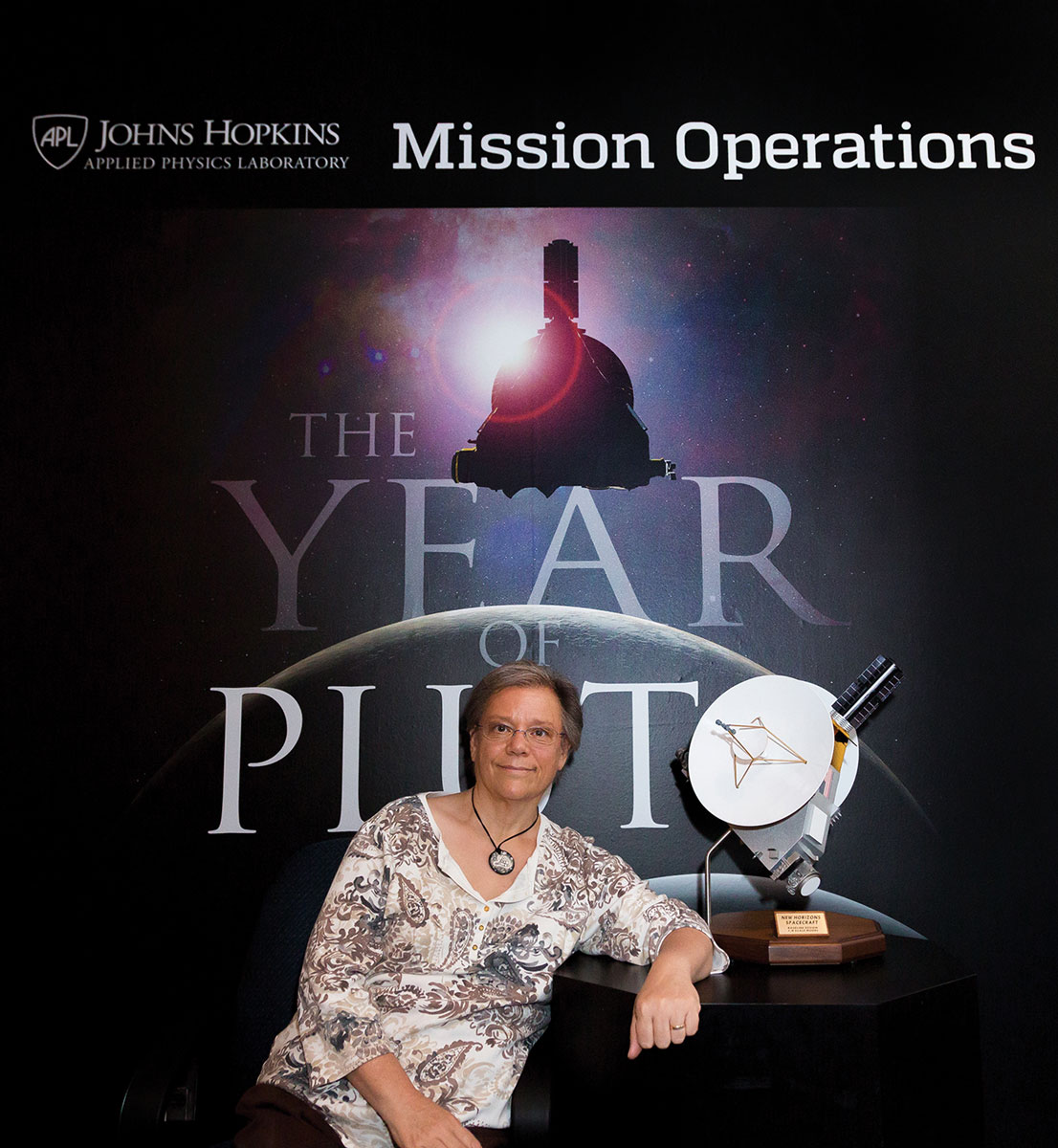
“There were very few lights out there,” she says. “I looked up into the sky and I asked my mother what those twinkly things were. She tried to think of something I might’ve seen. She told me they were God’s streetlights. The answer must’ve dissatisfied me, because I’ve studied them my whole life.”
The current object of Hart’s fascination isn’t a star, though, it’s a planet. Or it was a planet, before the International Astronomical Union downgraded Pluto to a dwarf planet in 2006. In any case, Hart, who graduated from UM in 1981 with a physics degree, works in mission planning and scheduling for New Horizons, the unmanned spacecraft that launched a decade ago to study Pluto. Hart says the nomenclature surrounding Pluto can feel like a distraction.
“Whatever we call Pluto, whatever bin we chuck it in for funding, or whatever textbook chapter it shows up in, it doesn’t change what it actually is,” Hart says.
What it is, in a word, is amazing. Pluto was only discovered in 1930, and until recently it was little more than a faint dot at the edge of our solar system. But last July, after a nine-year, 3-billion-mile voyage, New Horizons became the closest man-made object to fly by the dwarf planet. The seven sensitive instruments onboard have given scientists a detailed portrait of one of the least-understood objects in our solar system.
New Horizons gathered about ten gigabytes of data during its flyby, information that it’s still sending back to Earth. The craft is so far away, and downlink rates are so slow, that scientists will receive high-resolution pictures and measurements until the end of this year. They’ve already learned that Pluto has hazy skies, ice mountains as tall as the Rockies, and a dramatic landscape of craters, frozen plains, and windswept dunes.
“The reality of Pluto is more complex and stunning than anything we had dared to dream,” Hart says.
New Horizons now is hurtling away from Pluto at nine miles per second. Its next objective, if funding for the mission is extended in 2016, is to fly past an object in the Kuiper Belt.
“It has the glamorous name of 2014-MU69,” Hart says. “We don’t know much about it yet, except that it’s there, and we can get to it.”
Hart keeps tabs on New Horizons from the Johns Hopkins Applied Physics Laboratory in Maryland, where her main concern is control and safety of the spacecraft. She also works on an instrument called SWAP that determined Pluto had no intrinsic magnetic field and another that identified particles escaping Pluto’s atmosphere.
The instruments aren’t the only things aboard New Horizons. There are also the ashes of Clyde Tombaugh, the man who discovered Pluto. There’s a U.S. postage stamp and two quarters. There’s a CD with a list of more than 400,000 names.
“In the event that someone ever finds this, these things will be there,” Hart says. “These symbols are a way of putting ourselves, our people, into this spacecraft—our hopes and our dreams, our aspirations, our identities—and passing them into the universe, or whatever tiny part of it we’re able to reach.”

Jacob Baynham graduated from UM with a journalism degree in 2007. He writes for Outside, National Parks, and other magazines. He lives in Missoula with his wife, Hilly McGahan ’07, and their two sons.